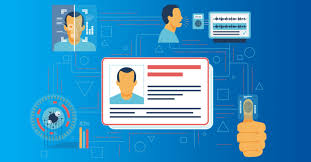In today’s increasingly digital society, identity verification has become an essential process to protect yourself and avoid fraud. It involves confirming the legitimacy of an individual’s identity prior to granting access to different systems or services. This article will provide a thorough overview of what you need to be aware of about identity verification.
What is Identity Verification?
identity verificaiton involves confirming that an individual is who they say they are. This can be done using a variety of methods that may include biometric information, documents or any other personal data. The goal is to ensure that the user of an online or computer system is authorized to do so.
Methods of Identity Verification
Checking for documents: This standard method involves examining government-issued documents such as passports driver’s licenses, and ID cards. The user may be required to submit images and physical copy of such documents. The verification process can be manual or automated by Optical Character Recognition (OCR) technology.
Biometric Verification: This entails using biometric traits that are unique to prove identity. The most common biometric methods are fingerprint scanning, facial recognition, voice recognition and scans of the iris. Biometric data is often considered to be more secure due to the fact that these traits are difficult to replicate.
Knowledge-Based Verification: This technique is based on what the user already knows, such as answers to security-related questions or personal data such as Social Security numbers or account numbers. Although widely used, it can be less secure if the data is stolen.
Two-Factor authentication (2FA) It adds an additional layer of security by requiring two types of verification. It typically involves something the user knows (like a password) as well as something they possess (such as a mobile device that receives the verification number).
Why is Identity Verification Important?
Identity verification plays a critical role in safeguarding financial and personal information. It helps prevent identity theft, fraud and unauthorised access to sensitive information. By ensuring that individuals are properly identified, companies can minimize risks and comply with laws such as those of the General Data Protection Regulation (GDPR) and the Know Your Customer (KYC) requirements.
Challenges and Considerations
Although it is important, identity verification is not free of challenges. It can be cumbersome for users, particularly when several verification steps are needed. Additionally, privacy concerns occur as more personal data is stored and collected. Ensuring that the data is secure and utilized in a safe manner is crucial.
Future Trends
Future of identity verification is orienting toward more sophisticated technologies, such as blockchain technology for decentralized identity management and AI for more accurate biometric verification. These developments aim to increase security, reduce fraud, and simplify the verification process.
In the end, identity verification is a vital element of modern security methods. Through understanding the different methods and their significance for both organizations and individuals, they are better protected and navigate the world of technology with greater security.

